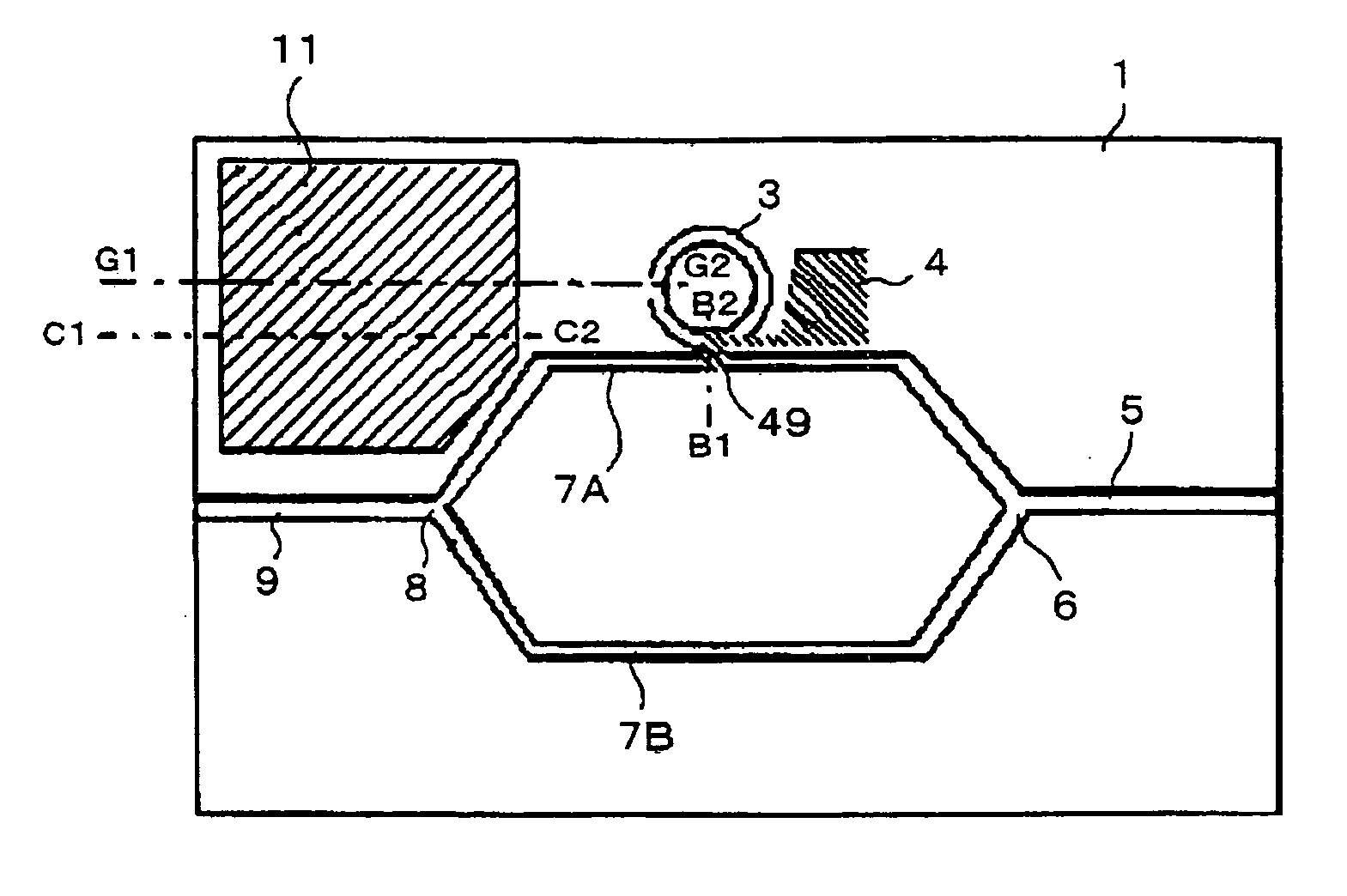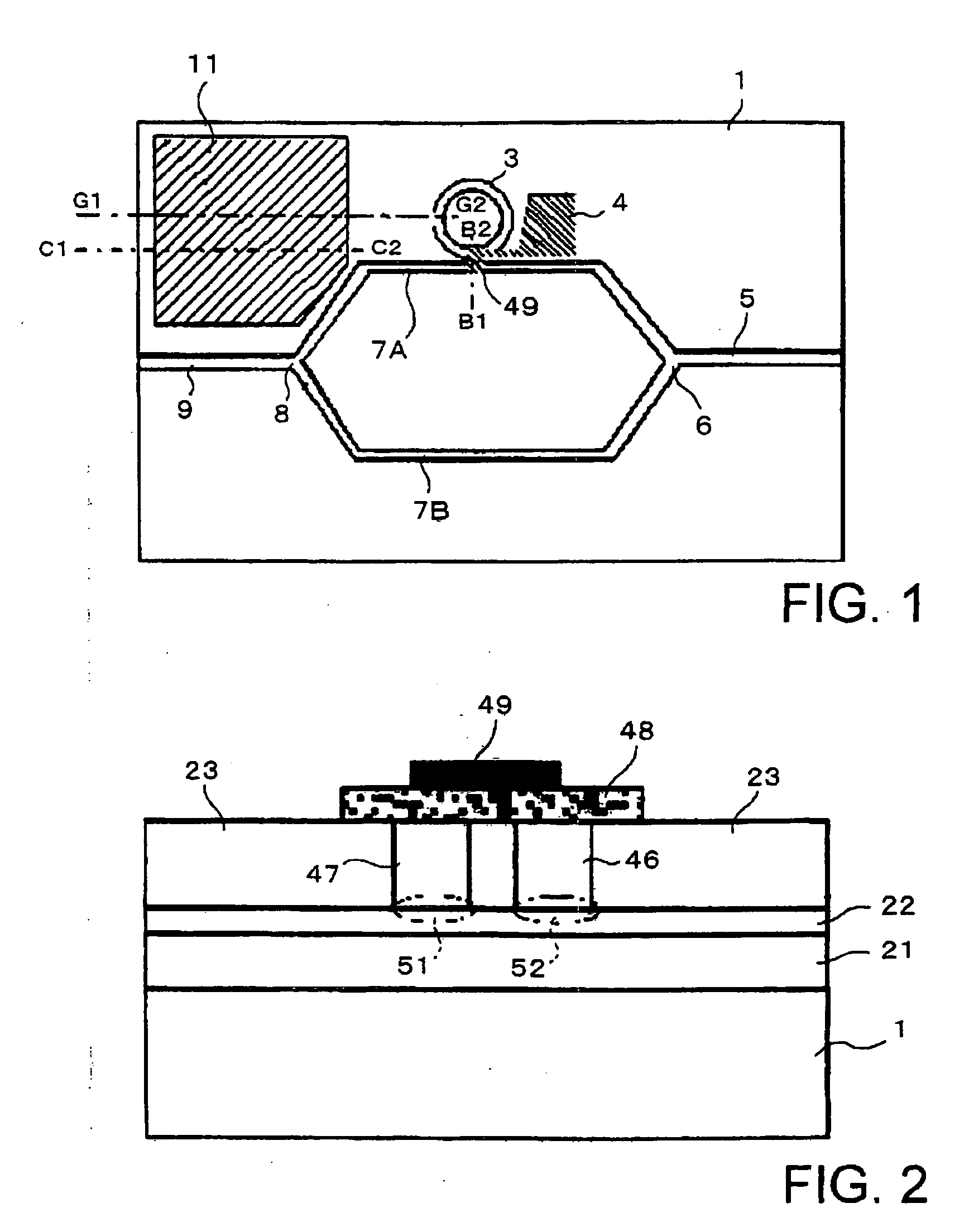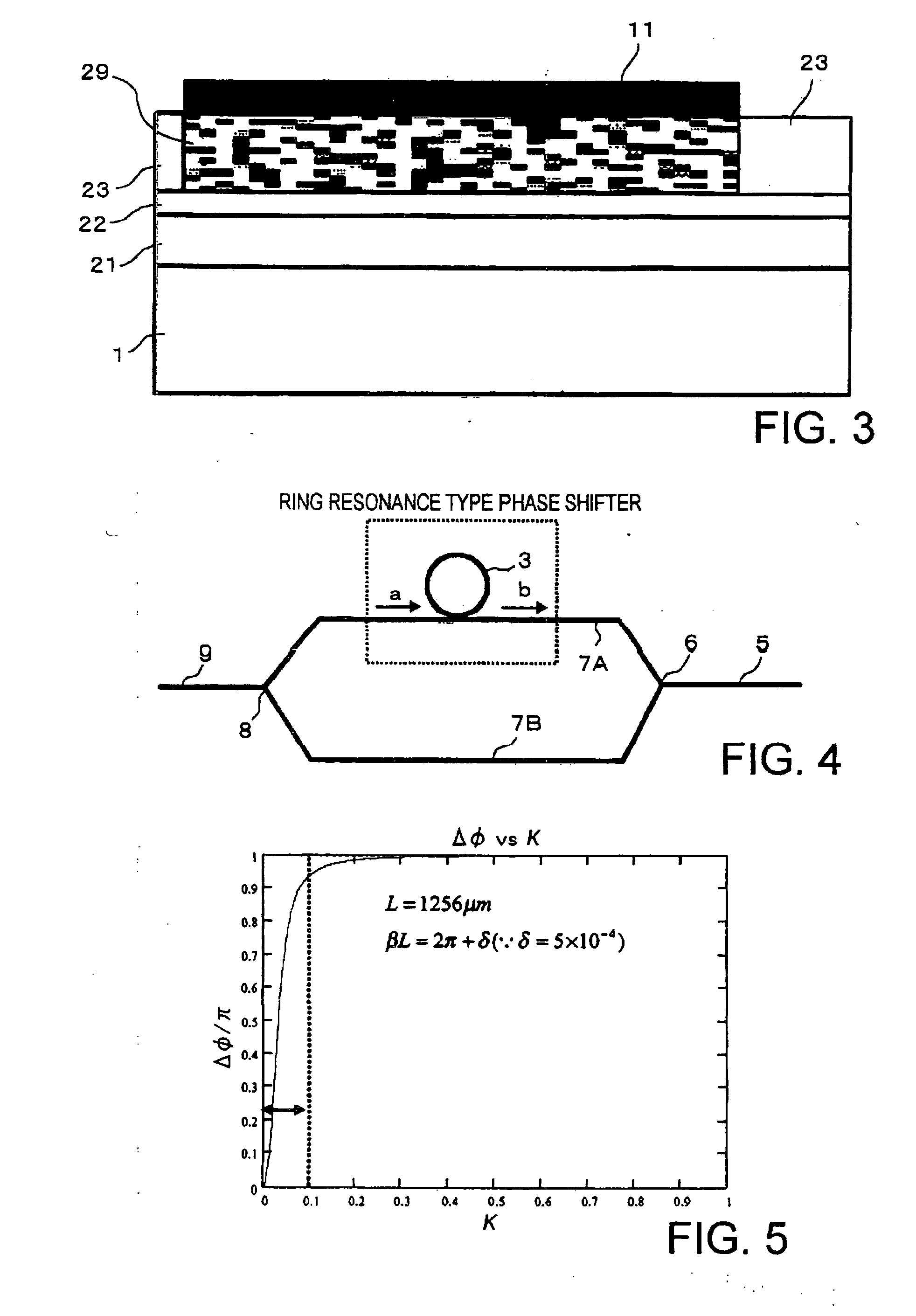Optical functional device and fabrication process of the same
- Summary
- Abstract
- Description
- Claims
- Application Information
AI Technical Summary
Benefits of technology
Problems solved by technology
Method used
Image
Examples
first embodiment
[0040]FIG. 1 shows a configuration of an optical functional device according to the first embodiment of the present invention. Here, the optical functional device is given as a Mach-Zehnder type optical modulator.
[0041] Formed on one planar surface on top of silicon substrate 1 are input optical waveguide 9 which receives a light wave signal from its one end, splitter 8 connected to the other end of input optical waveguide 9, a pair of branch optical waveguides 7A, 7B, combiner 6 which combines light wave signals having passed through the two branch optical waveguides 7A, 7B, output optical waveguide 5 for outputting the light wave signal that was combined at combiner 6, and ring-type optical waveguide 3 to be mode-coupled with one branch optical waveguide 7A. Ring-type optical waveguide is arranged close to this branch optical waveguide 7A. Though in the figure, branch optical waveguides 7A, 7B are provided as linear configurations, these may be formed in curved shapes. Splitter 8...
second embodiment
[0059] Next, as the second embodiment of the present invention, a Mach-Zehnder type optical attenuator that will operate with low power consumption will be described. FIG. 7 shows an optical attenuator according to the second embodiment. FIG. 8 shows the section cut along line D1-D2 in FIG. 7. In FIGS. 7 and 8, the same components as those shown in FIGS. 1 to 3 are allotted with the same reference numerals.
[0060] Similarly to the optical modulator of the first embodiment, this optical attenuator uses a ring resonance type phase shifter made up of ring-type optical waveguide 3 and branch optical waveguide 7A. Amplitude branching ratio K between ring-type optical waveguide 3 and branch optical waveguide 7A is controlled so as to vary the intensity of the light wave signal emitted from output optical waveguide 5. Here in this embodiment, heater 65 is arranged at the site where ring-type optical waveguide 3 and branch optical waveguide 7A are mode-coupled, and a change in temperature i...
third embodiment
[0067] Next, an optical modulator according to the third embodiment of the present invention will be described. FIG. 9 shows an optical modulator of the third embodiment. This optical waveguide has a similar configuration to the optical modulator of the first embodiment, and FIG. 9 corresponds to the section cut along line B1-B2 in FIG. 1. However, in the optical modulator of the present embodiment, in order to make amplitude branching ratio K between branch optical waveguide 7A and ring-type optical waveguide 3 variable, EO effect layer (i.e., electro-optic effect device) 130 made up of a material having electro-optic effect is arranged in the area between the cores of optical waveguides 3, 7A in the area where branch optical waveguide 7A and ring-type optical waveguide 3 are mode-coupled. Since in this optical modulator, the magnitude of the EO effect varies in accordance with the voltage applied to EO effect layer 130, it is possible to vary the coupled state between the two opti...
PUM
 Login to View More
Login to View More Abstract
Description
Claims
Application Information
 Login to View More
Login to View More - R&D
- Intellectual Property
- Life Sciences
- Materials
- Tech Scout
- Unparalleled Data Quality
- Higher Quality Content
- 60% Fewer Hallucinations
Browse by: Latest US Patents, China's latest patents, Technical Efficacy Thesaurus, Application Domain, Technology Topic, Popular Technical Reports.
© 2025 PatSnap. All rights reserved.Legal|Privacy policy|Modern Slavery Act Transparency Statement|Sitemap|About US| Contact US: help@patsnap.com



